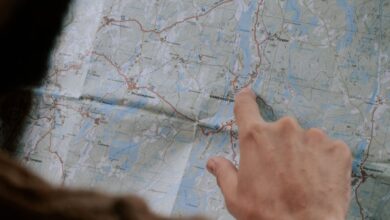How Do You Prepare for a Cycling Tour
Cycling tours can be exhilarating adventures that allow you to explore new landscapes, meet fellow enthusiasts, and soak in the beauty of the great outdoors. However, these trips require careful preparation to ensure both safety and enjoyment. Whether you’re a seasoned cyclist or a novice looking to embark on your first tour, understanding how to prepare will make all the difference.
Plan Your Route
The first step in preparing for a cycling tour is mapping out your route. Research different trails, roads, and bike paths that align with your fitness level and interests. Consider factors like elevation changes, road conditions, and traffic levels. Utilize cycling apps or websites to read reviews and gather insights from other riders about specific stretches. Creating a detailed itinerary will not only help you stay on track but also allow you to anticipate any challenges along the way.
Gear Up
Selecting the right gear is crucial for a successful tour. Start with your bike; ensure it’s in optimal condition and fits you well. Before the trip, perform a thorough inspection, checking the brakes, gears, and tires. Consider upgrading components like the saddle for added comfort, especially for long rides. Don’t forget essential accessories such as a helmet, lights, and a reliable lock. Pack appropriate clothing made from moisture-wicking materials to keep you dry and comfortable during your journey. Layering is key, as weather conditions can change unexpectedly.
Nutrition and Hydration
Your body will be your engine throughout the tour, so fueling it properly is essential. Plan your meals ahead of time, focusing on high-energy foods that are lightweight and easy to carry. Energy bars, nuts, dried fruits, and electrolyte tablets are excellent choices. Familiarize yourself with local cuisine along your route to experience the culture while refueling. Hydration is equally important; carry enough water and a reliable filtration system if you plan to refill from natural sources. Make a habit of drinking regularly to stay energized and avoid fatigue.
Train Wisely
Physical preparation cannot be overlooked. Start training several weeks or even months before your tour, gradually increasing your mileage and intensity. Aim for a mix of long rides, hill workouts, and interval training to build endurance and strength. Incorporate cross-training activities such as running, swimming, or strength training to enhance your overall fitness. Listen to your body; rest days are as important as training days to prevent burnout and injuries.
Safety First
Safety should always be a priority while cycling. Familiarize yourself with traffic laws and local cycling regulations. Invest in a quality first-aid kit and carry it with you on the trip. Knowing basic first-aid skills can prove invaluable in emergencies. Always inform someone about your route and expected return time. It’s wise to have a backup plan for mechanical issues, so consider carrying a multi-tool, spare tubes, and a pump. A charged phone with emergency contacts and navigation apps can also be a lifesaver.
Packing Smart
When it comes to packing, less is often more. Choose lightweight gear and versatile clothing that can be mixed and matched. Opt for panniers or a comfortable backpack to distribute weight evenly. Keep essential items like tools, snacks, and your phone easily accessible. Make sure to pack rain gear, as weather can be unpredictable. Organize your belongings to avoid rummaging through your bag at every stop, which can waste precious time.
Enjoy the Journey
As you embark on your cycling tour, remember that the journey is just as important as the destination. Take the time to appreciate the scenery, meet locals, and enjoy the little moments along the way. Document your experiences through photos or journaling, creating lasting memories of your adventure. Embrace any challenges you encounter, as they often lead to personal growth and unforgettable stories.
Final Thoughts
Preparation is key to a successful cycling tour, ensuring you remain safe, comfortable, and ready to embrace the adventure. By planning your route, gearing up appropriately, training diligently, and prioritizing safety, you will set the stage for an unforgettable experience. So, hop on your bike, hit the road, and let the wind guide you on your next cycling adventure!







